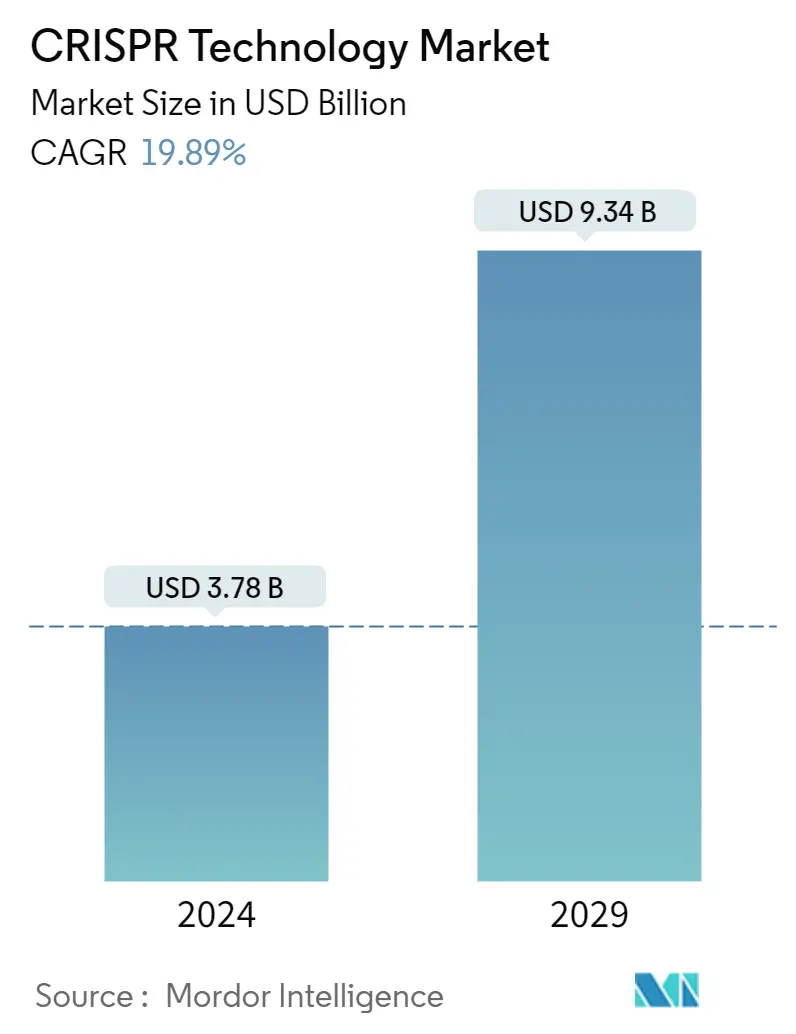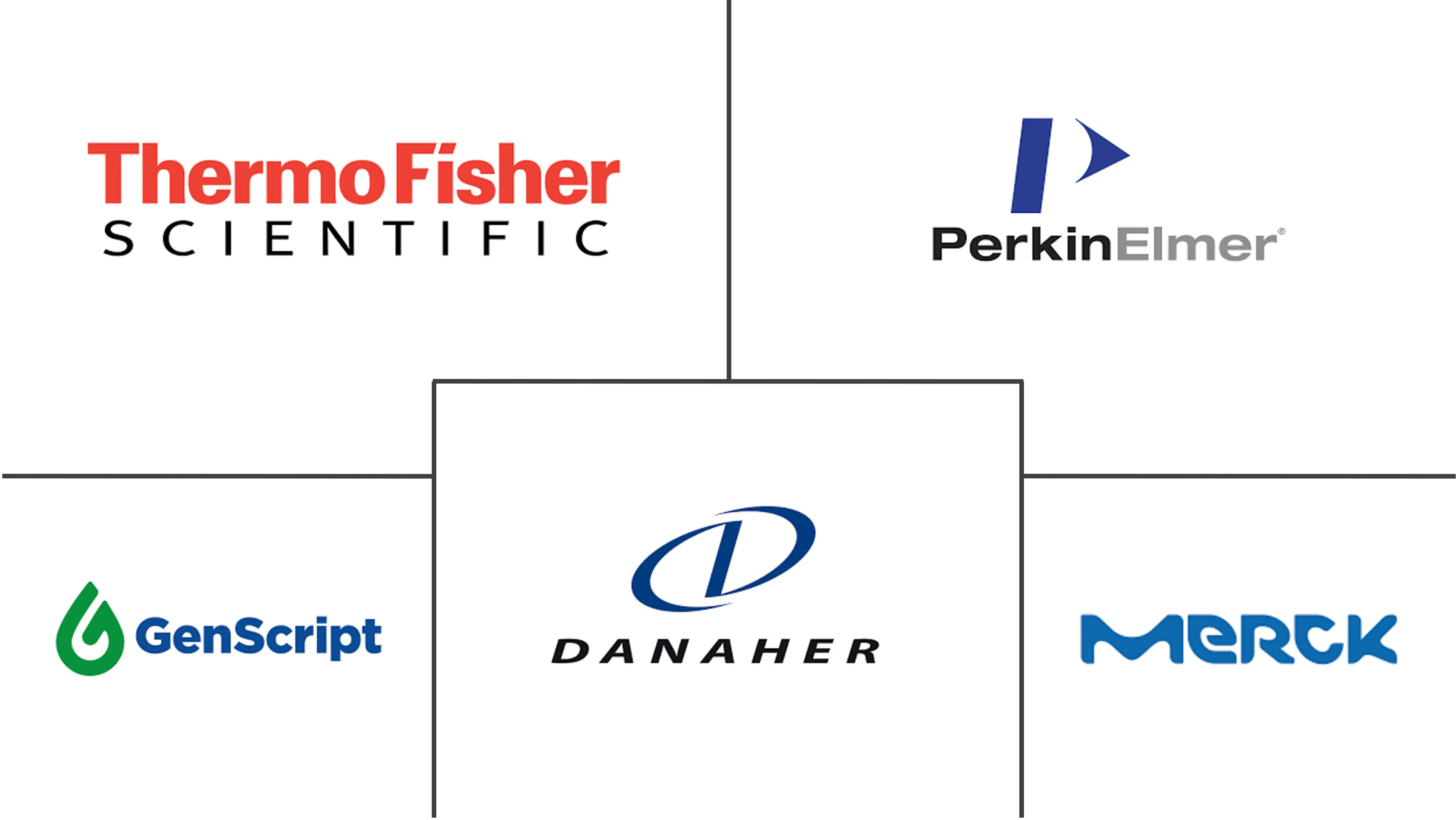Market Size of CRISPR Technology Industry

| Study Period | 2019 - 2029 |
| Market Size (2024) | USD 3.78 Billion |
| Market Size (2029) | USD 9.34 Billion |
| CAGR (2024 - 2029) | 19.89 % |
| Fastest Growing Market | Asia Pacific |
| Largest Market | North America |
Major Players
*Disclaimer: Major Players sorted in no particular order |
Need a report that reflects how COVID-19 has impacted this market and its growth?
CRISPR Technology Market Analysis
The CRISPR Technology Market size is estimated at USD 3.78 billion in 2024, and is expected to reach USD 9.34 billion by 2029, growing at a CAGR of 19.89% during the forecast period (2024-2029).
The COVID-19 pandemic is expected to positively impact the market due to increased demand for diagnostic tests. For instance, in May 2020, Sherlock Biosciences announced it received Emergency Use Authorization from the United States Food and Drug Administration (FDA) for its Sherlock CRISPR SARS-CoV-2 kit, used for the detection of the virus. The equipment could provide results in approximately one hour, a much lower timeframe than other tests available in the market. Thus COVID-19 led to the development of advanced diagnostic kits using CRISPR technology and contributed to the market's growth during the pandemic period. However, the demand for CRISPR technology is expected to rise due to the emergence of new mutant strains of COVID and the need for effective diagnosis, thereby contributing to the market's growth over the coming five years.
Specific factors driving the market's growth include increasing government and private funding, rising demand for and adoption of CRISPR, and technological advancements. For the development of CRISPR technology, the government is often funded via individual investigator grants and government and private companies such as research projects and program grants, which are expected to boost the market. For instance, in September 2021, Mammoth Biosciences raised over USD 195 million of financing at a valuation of the company's CRISPR technology, Cas 14. Similarly, according to the National Center for Advancing Translational Sciences, in 2020, the Somatic Cell Genome Editing (SCGE) Program at the National Institutes of Health (NIH) awarded 24 more grants to researchers across the United States and Canada. The SCGE Program awarded a total of USD 89 million in advance genome editing grants, including CRISPR, over the next four years. This brings the total number of supported projects to 45, with approximately USD 190 million in funding spread over six years. Such funding for the market players and grants from national institutes help boost the CRISPR technology market over the forecast period.
CRISPR technology also advances genome editing across medicine, biotechnology, and agriculture, enabling scientists to conduct research in these fields through faster and more efficient genome editing worldwide. Thus, the demand for CRISPR technology is rising due to its easy, quick, and inexpensive access to vectors and the resulting next-generation tools. CRISPR-Cas9 works for many diseases, including inherited eye diseases, neurodegenerative conditions such as Alzheimer's and Huntington's, and non-inherited diseases such as cancer and HIV. According to the study published in the New England Journal of Medicine in January 2021, CRISPR-Cas9-based gene editing is being tested to treat two cases of inherited diseases: one in a patient with TDT (β-Thalassemia) and the other in a patient with SCD (sickle cell disease). During the 12 months following the administration of CTX001, both patients experienced early, substantial, and sustained increases in fetal hemoglobin levels with more than 99% pancellularity. Thus, applying CRISPR technology in sickle cell disease and β-Thalassemia is expected to drive its demand, thereby contributing to the market's growth over the forecast period.
Thus, the studied market is expected to project growth over the forecast period due to the abovementioned factors.
